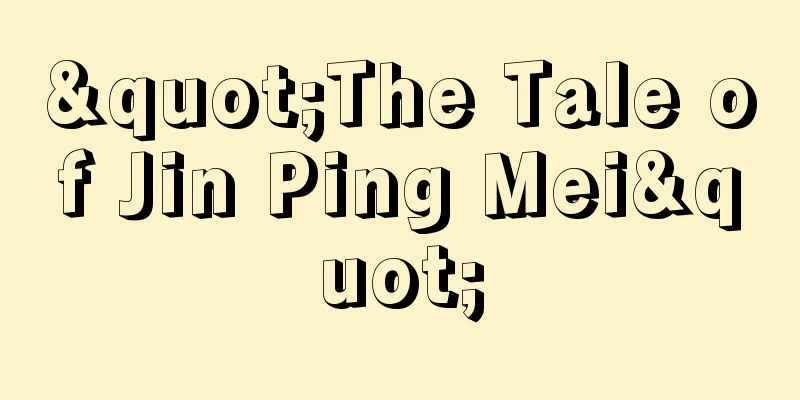Woman

|
〘 noun 〙 (a variation of "omina (woman)") A human being who is not male. A person who is naturally endowed with the organs to produce eggs. ① A woman, regardless of age. A lady. A female . A woman. A man. ※The Bamboo Cutter (late 9th century - early 10th century) "In this world, men do things that are suitable for women, and women do things that are suitable for men." ② A woman who has become fully grown, both mentally and physically. It can also be used to mean feminine qualities such as gentle, graceful, and delicate. ※Aobyoushi Ippon Genji (around 1001-14) Tamakazura "I had been searching for her in secret for a certain age, and time passed before she became a beautiful woman." ③ A spouse for a husband. A wife. A woman's wife. ※Toraakirahon Kyogen, Ishigami (late Muromachi period - early modern period) "Because of the woman, I have been living a carefree life, but what is she like?" ④ Mistress. Lover. Concubine. ※Konjiki Yasha (1897-98), Ozaki Koyo, continued "That's true. What 's the point of having a mistress ?" ⑤ Housemaid. Maid. [Essays, Morisada Manko (1837-53)] ※Ukigumo (1887-89), Futabatei Shimei, 1 "Because the waitress is inexperienced . " ⑥ Prostitute. Prostitute. Whore. ※Sharehon, Sendo Shinbanashi (1802), 1 "The word for prostitute is onna-onna, but that's just how these people say it." ⑦ A woman's appearance, beauty. →To elevate a woman. ※Ninjyohon Hanagoyomi Fuujibun (c. 1866) 3 “ And so the woman looks very beautiful” ⑧ Something female. “Onna-uma” ⑨ Of a pair of things, the one with characteristics such as smallness and gentleness. “Onna-zaka” “Onna-yama” [Etymology] ( 1) In ancient times, there were two terms for men and women: Okina-Omina and Oguna-Omina, which consist of O and Wo, which indicate size, and Otoko-Otome, which is composed of the verb wotsu, meaning to become younger. The former meant older and younger men and women, and the latter meant men and women of marriageable age. However, in the Kojiki, the same woman is called Otome and Omina, and in Manyo-4317, Otoko and Omina are paired, as in "Now I shall go to the autumn fields to gaze upon the Otoko and Omina flowers," so it seems that the meaning of a young woman and the meaning of a woman of marriageable age were confused, resulting in the pair Otoko-Omina. Then, as Otoko came to refer to men in general, Omina also changed to Onna during the Heian period, and came to refer to women in general. → Omina, Ouna, Otome, Otoko. (2) → Origin of the word "onna (girl)" Jojo [female]Onawona [Woman]Ominawomina [Woman]Onna- shionna... [Woman]Ona wo naa [female]Source: The Selected Edition of the Japanese Language Dictionary About the Selected Edition of the Japanese Language Dictionary Information |
|
〘名〙 (「をみな(女)」の変化した語) 人間のうち、男ではない方。本来卵子をつくる器官をそなえている方。① 年齢に関係なく、女性。婦人。女子(じょし)。おなご。め。⇔おとこ。※竹取(9C末‐10C初)「この世の人は、男は女にあふ事をす。女は男にあふことをす」② 特に、精神的にも肉体的にも、一人前となった女性。やさしい、しとやか、繊細など、女性の特質とされる意味を含んで使われる場合もある。※青表紙一本源氏(1001‐14頃)玉鬘「年ごろも人知れず尋ね侍りつれば、え聞き出ででなむ女になるまで過ぎにけるを」③ 夫に対する配偶者。妻。女房。※虎明本狂言・石神(室町末‐近世初)「おんなのかけでいままで某は、らくらくとすぎて御ざるに、あれがいずはそれがしは何共なるまひ」④ 情婦。愛人。妾。※金色夜叉(1897‐98)〈尾崎紅葉〉続「其の通だ。情婦(ヲンナ)が有るのが奈何(どう)したと」⑤ 下女。女中。〔随筆・守貞漫稿(1837‐53)〕※浮雲(1887‐89)〈二葉亭四迷〉一「給事の婢(ヲンナ)が不慣れなので」⑥ 遊女。女郎。淫売婦。売春婦。※洒落本・船頭深話(1802)一「女郎の事を女女といふが此連中の通り句也」⑦ 女性の容貌、器量。→女を上(あ)げる。※人情本・花暦封じ文(1866頃)三「然様(さう)して女(ヲンナ)も大層美(い)いさうですから」⑧ 雌性のもの。「女馬」⑨ 対になったもののうち、小さい、なだらか、などの性質をそなえた方。「女坂」「女山」[語誌](1)古代では男女の呼称を、大小を表わすオとヲでいうオキナ━オミナ、ヲグナ━ヲミナと、若返る意の動詞ヲツを構成要素とするヲトコ━ヲトメがあって、前者は年長・年少の男女を意味し、後者は結婚適齢期の男女を意味した。ところが「古事記」では同じ女性をヲトメともヲミナとも呼んでおり、「万葉‐四三一七」では「秋野には今こそ行かめもののふの乎等古(ヲトコ)乎美奈(ヲミナ)の花にほひ見に」とヲトコとヲミナが対になっているから、年少の女性の意と適齢期の女性の意が混同されて、ヲトコ━ヲミナという対が生じたらしい。そしてヲトコが男性一般をいうようになったのに伴ってヲミナも平安時代にヲンナと変化し、女性一般を指すようになった。→おみな・おうな・おとめ・おとこ。 (2)→「おなご(女子)」の語誌 じょ ヂョ【女】おな をな【女】おみな をみな【女】おんな‐し をんな‥【女】おなあ をなあ【女】出典 精選版 日本国語大辞典精選版 日本国語大辞典について 情報 |
Recommend
Displacement behavior
The zigzag dance of sticklebacks is a good exampl...
Tokai Kaiun (Tokai Shipping) - Higashimawari Kaiun
This refers to shipping that departs from ports al...
Forest yield table
Also called a stand yield table. A chart showing s...
Aleksandr Aleksandrovich Bestuzhev
Russian author. Pen name Марлинский/Marlinskiy. B...
Isbahan - Isbahan
...Population: 1.22 million (1994). The correct p...
Papal election - electio papae (Latin)
An election held in the Roman Catholic Church to c...
Gold - Kin
Au. Element with atomic number 79. Group 11 trans...
Kanze Shinkuro School
…(2) The name of a school of Noh performers who p...
Pavilion
〘noun〙 (pavilion)① A temporary building used for e...
Filibe
...After the invasion and destruction of the east...
Bubolus quarlesi (English spelling) Bubolusquarlesi
…[Yoshinori Imaizumi]. … *Some of the terminology...
Mori Kainan
Year of death: March 7, 1911 (Meiji 44) Year of bi...
Mazus
...A perennial herb of the Scrophulariaceae famil...
Yellow-green algae - Yellow-green algae
…Currently, there are approximately 30,000 known ...
Ketchup - Ketchup (English spelling)
A type of sauce made by boiling vegetables, strai...









![Kobe [city] - Kobe](/upload/images/67cb8bfe110b8.webp)